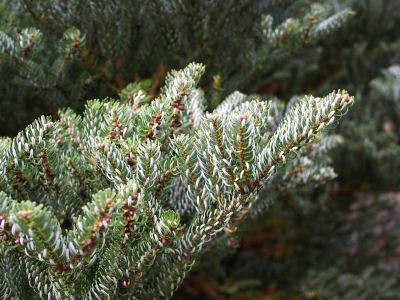Korean Fir Tree Information
Korean fir trees are native to Korea where they live on cool, moist mountainsides. The trees get leaves later than other species of fir trees and, therefore, are less easily injured by unexpected frost. According to the American Conifer Society, there are around 40 different cultivars of Korean fir trees. Some are quite hard to find, but others are well known and more readily available. Korean fir trees have relatively short needles that are dark to bright green in color. If you are growing silver Korean fir, you’ll note that the needles twist upwards to reveal the silver underside. The trees are slow-growing. They produce flowers that are not very showy, followed by fruit that is very showy. The fruit, in the form of cones, starts out in a lovely shade of deep violet-purple but matures to tan. They grow to the length of your pointer finger and are half that wide. Korean fir tree information suggests that these Korean fir trees make great accent trees. They also serve well in a massed display or a screen.
How to Grow a Silver Korean Fir
Before you start growing silver Korean firs, be sure you live in USDA zone 5 or above. Several cultivars of Korean fir can survive in zone 4, but “Silver Show” belongs in zone 5 or above. Find a site with moist, well-drained soil. You’ll have a hard time caring for Korean fir if the soil holds water. You’ll also have a hard time caring for the trees in soil with a high pH, so plant them in acidic soil. Growing silver Korean fir is easiest in a full sun location. However, the species tolerates some wind. Caring for Korean fir includes setting up protections to keep deer away, as the trees are easily damaged by deer.
